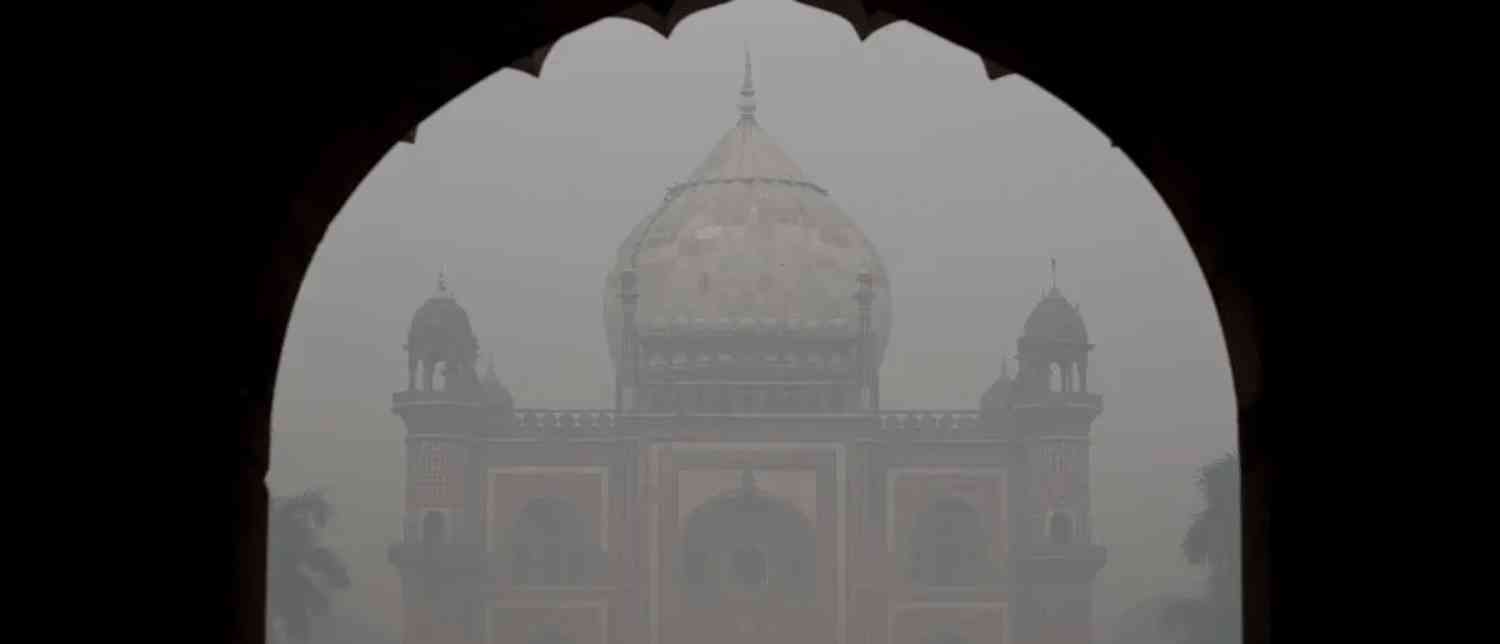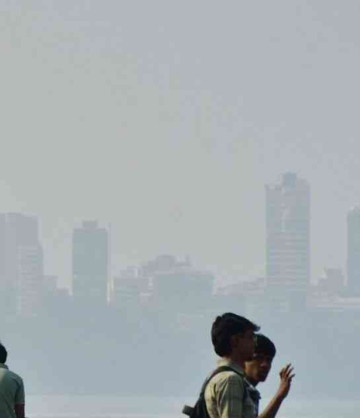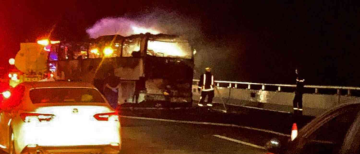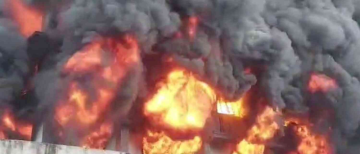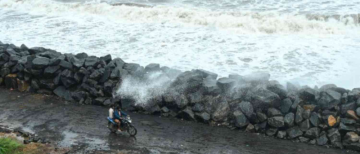Delhi’s post-Diwali air once again turned toxic, with thick smog engulfing the national capital and the majority of air monitoring stations entering the dreaded ‘red zone’. Despite a Supreme Court directive permitting only “green crackers” between 8 pm and 10 pm on Diwali night, fireworks lit up the skies well beyond the permitted hours, triggering a sharp spike in pollution across Delhi-NCR.
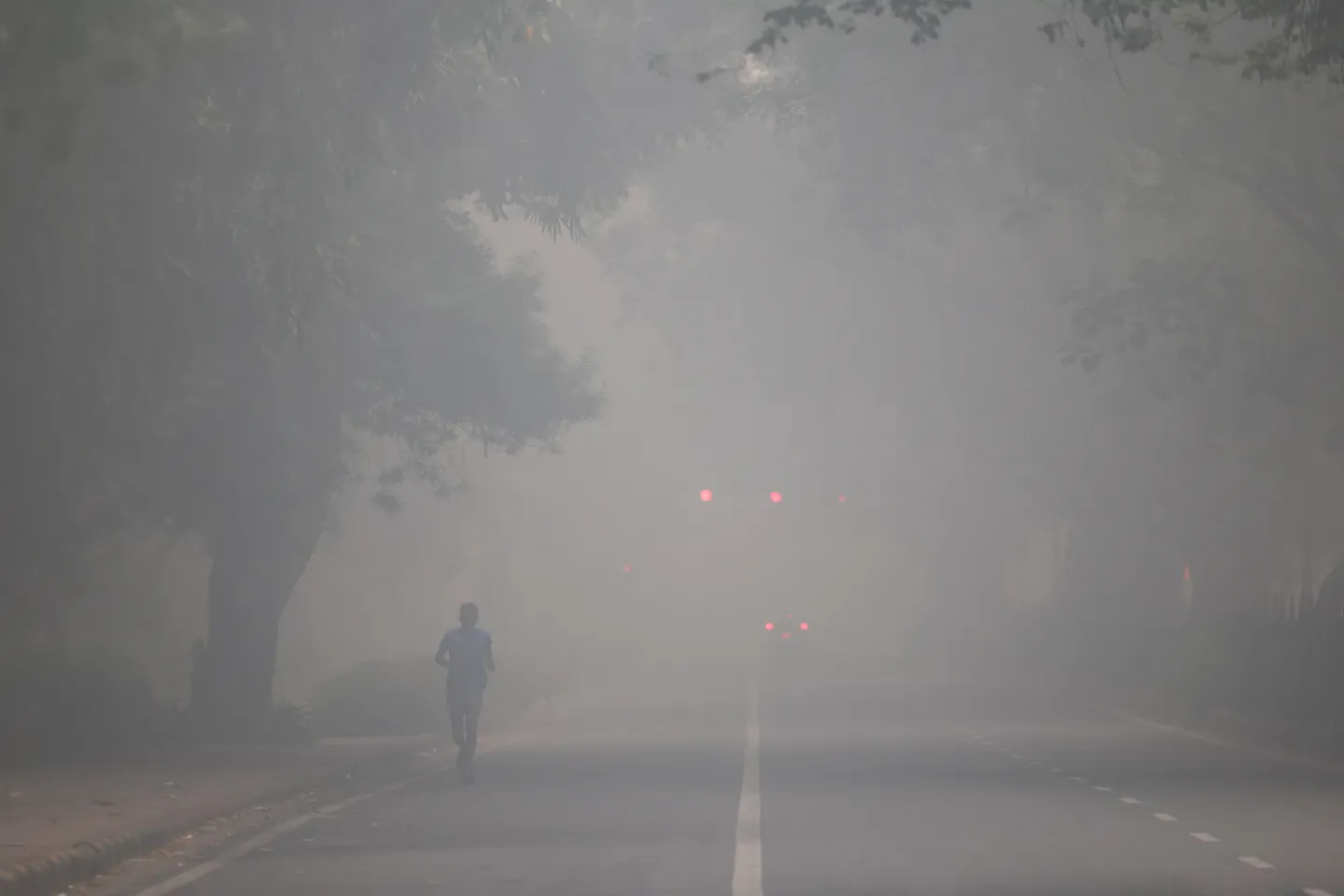
36 of 38 Stations Record ‘Red Zone’ Levels
By Monday night, as celebrations continued across Delhi, data showed that 36 out of 38 monitoring stations reported air quality in the ‘very poor’ to ‘severe’ category. At 10 pm, Delhi’s overall Air Quality Index (AQI) stood at 344 (‘very poor’), while four major stations breached the ‘severe’ level of 400:
-
Dwarka: 417
-
Ashok Vihar: 404
-
Wazirpur: 423
-
Anand Vihar: 404
Morning visuals on Tuesday revealed familiar scenes of a hazy Akshardham temple, barely visible through the dense smog. The city’s 24-hour average AQI, reported daily at 4 pm, stood at 345, a jump from 326 on Sunday, according to official data.
Authorities warned that air quality would likely deteriorate further, slipping deeper into the ‘severe’ category through Tuesday and Wednesday.
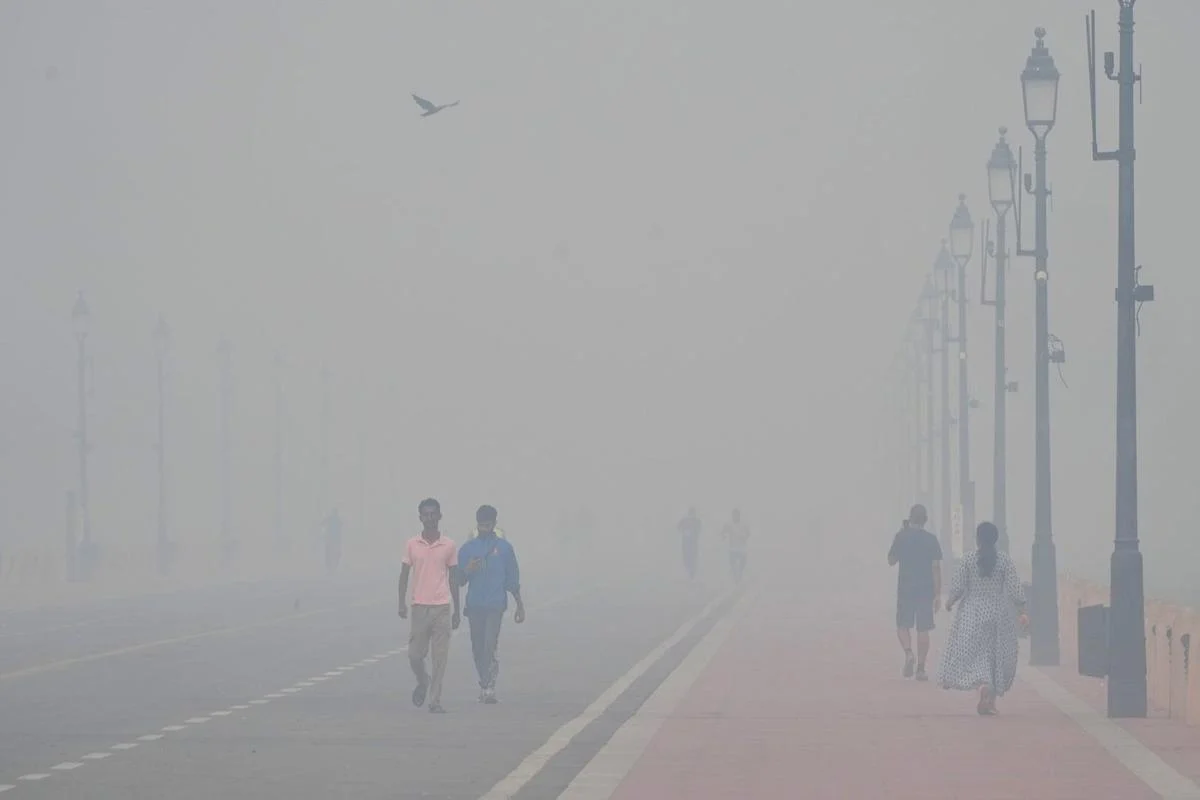
Delhi Under GRAP-2 Restrictions
The Commission for Air Quality Management (CAQM) had already invoked Stage II of the Graded Response Action Plan (GRAP-2) across Delhi-NCR on Sunday, after forecasts from the India Meteorological Department (IMD) and the Indian Institute of Tropical Meteorology (IITM) indicated worsening pollution.
Under GRAP-2, restrictions are placed on the use of coal and firewood, as well as diesel generator sets. Authorities also mandate road sweeping and water sprinkling to control dust pollution, along with efforts to ease traffic congestion.
Data from the Decision Support System (DSS) showed that on Diwali night, transport emissions contributed 15.6% to Delhi’s pollution, while industries and other sources accounted for 23.3%.
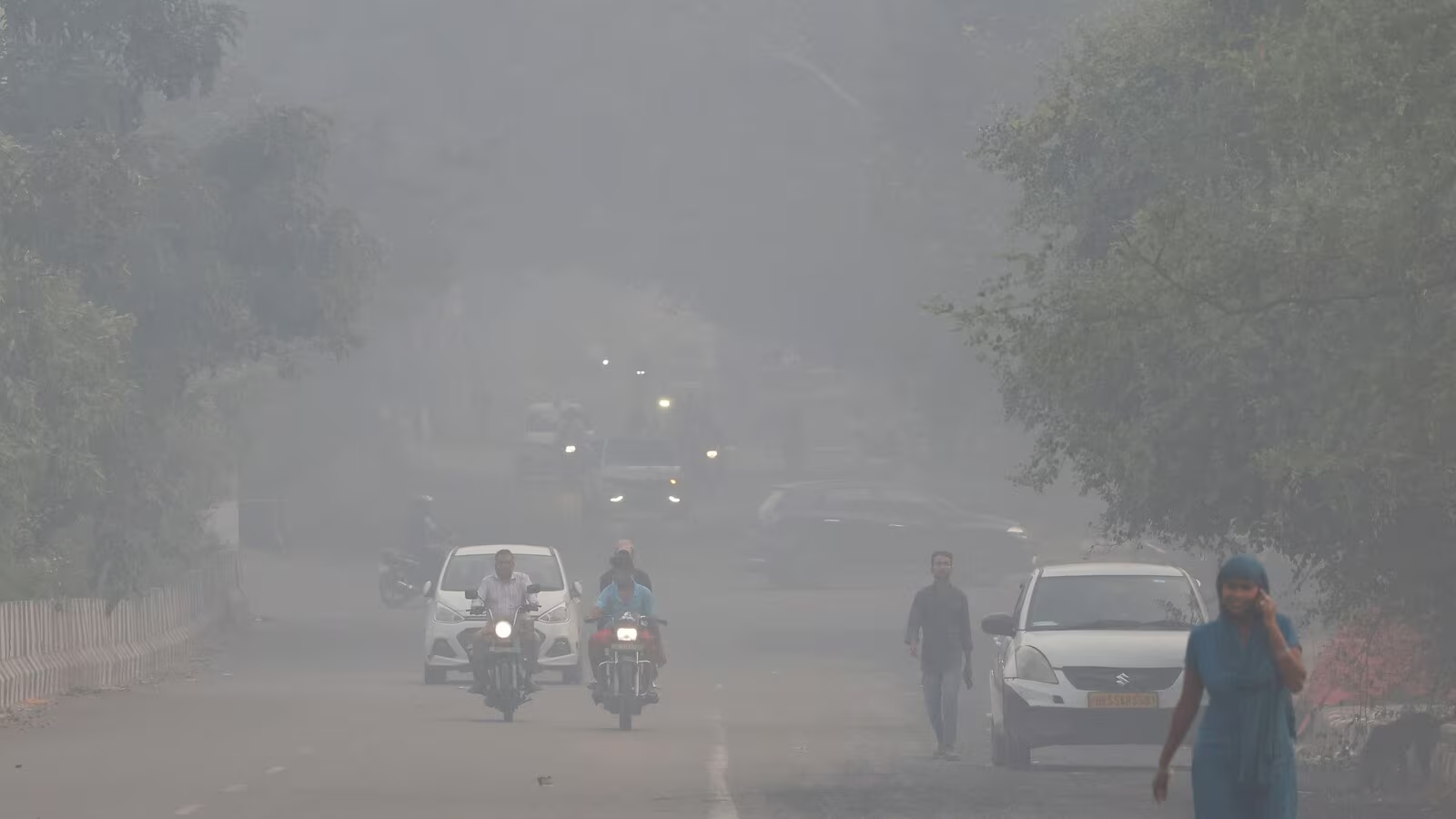
Toxic Tuesday Morning: ‘Delhi Is a Gas Chamber Again’
By 5:30 am on Tuesday, Delhi’s average AQI had already hit 346, firmly within the ‘very poor’ category. A video shared by PTI showed India Gate and Kartavya Path almost invisible through the haze, reflecting how severely visibility had dropped in the heart of the capital.
As residents stepped out to a suffocating morning, social media was flooded with outrage and despair.
“We don’t need green crackers today or tomorrow. We need better air quality. We have a right to breathe!” one user wrote on X (formerly Twitter).
Another shared:
“Hardly can I see fireworks in the sky, but still people continue to burst crackers, turning our city into a literal gas chamber.”
Some residents reported throat irritation, eye burning, and coughing, calling the city “unlivable.” One user lamented, “My throat is seriously burning. Delhi’s AQI exceeds 1000 in some areas, surpassing the maximum limit. But who cares?”
The frustration was widespread, but so was the dark humour. Memes comparing Delhi to a “gas chamber” flooded social media, marking yet another year of post-Diwali irony.
NCR Cities Fare No Better
According to private air quality tracker aqi.in, pollution wasn’t confined to Delhi. At 7 am, AQI levels across the NCR were alarming:
-
Noida: 412
-
Greater Noida: 390
-
Ghaziabad: 412
-
Faridabad: 412
-
Gurugram: 402
-
Meerut: 302
These readings placed nearly all major NCR cities in the ‘severe’ category.
#WATCH | Visuals from Akshardham temple as GRAP-2 invoked in Delhi.
The Air Quality Index (AQI) around Akshardham was recorded at 358, in the 'Very Poor' category, in Delhi this morning as per the Central Pollution Control Board (CPCB). pic.twitter.com/6JxECL9uPe— ANI (@ANI) October 21, 2025
Full List: Top Polluted Delhi Areas on October 21, 2025
|
Area |
AQI |
|---|---|
|
Bawana |
418 |
|
Wazirpur |
408 |
|
Jahangirpuri |
404 |
|
Burari Crossing |
393 |
|
Shadipur |
393 |
|
Ashok Vihar |
386 |
|
Punjabi Bagh |
375 |
|
RK Puram |
369 |
|
Rohini |
367 |
|
Vivek Vihar |
367 |
|
Sonia Vihar |
359 |
|
Narela |
354 |
|
Nehru Nagar |
354 |
|
Anand Vihar |
352 |
|
Dr Karni Singh Shooting Range |
352 |
|
DU North Campus |
352 |
|
Dilshad Garden |
346 |
|
Pusa |
346 |
|
ITO |
345 |
|
Okhla Phase 2 |
345 |
|
DTU |
342 |
|
Mathura Road |
341 |
|
Dwarka Sector 8 |
333 |
|
Alipur |
312 |
|
Sirifort |
310 |
Delhi’s air isn’t fog — it’s smog. AQI beyond limits. We’re gasping, not living. 💨 #DelhiPollution #AQICrisis pic.twitter.com/XroKr4BlRL— Dhruv (@dhruvsingh236) October 20, 2025
Firecrackers Not the Only Culprit
While the smoke from fireworks played a major role, stubble burning in Punjab and Haryana, coupled with vehicular emissions, further worsened Delhi’s air.
The CPCB’s AQI scale classifies:
-
Good (0–50)
-
Satisfactory (51–100)
-
Moderate (101–200)
-
Poor (201–300)
-
Very Poor (301–400)
-
Severe (401–500)
Anything beyond 500 is considered “hazardous” to human health.
Health experts have urged citizens to limit outdoor activities until air quality improves to at least the ‘moderate’ category.
Happy Diwali, Delhi 🙏
May the light of wisdom protect you — not just from pollution, but also from the smog of blind faith.
Carry oxygen, both for your lungs and your logic. pic.twitter.com/RyIsIWGB6S— Invincible (@sha_sha786) October 20, 2025
WHO’s Stricter Air Quality Guidelines
For context, the World Health Organization (WHO) recommends a 24-hour average of just 15 μg/m³ for PM2.5 and 45 μg/m³ for PM10 — limits that should not be exceeded more than a few days per year.
In Delhi, post-Diwali PM2.5 levels were many times higher, turning the festival morning into a toxic aftermath.
Did Delhi’s ‘Green Diwali’ Really Work?
Despite the Supreme Court allowing only “green crackers” — marketed as less polluting — the difference this year was marginal at best. At 8 am on Tuesday, Delhi’s AQI was 350, almost identical to previous years when regular crackers were used.
Year-on-Year Post-Diwali AQI Data:
-
2025: 350 (Green crackers allowed)
-
2024: 359 (Severe; SAFAR data)
-
2023: 438 (Severe; despite firecracker ban)
-
2022: 315 (Very poor)
-
2021: 454 (Severe; total ban defied)
The data reveals a grim truth — Delhi’s air quality deteriorates every Diwali, regardless of bans or “green” alternatives.
Lung & Respiratory care specialists in Delhi NCR hospitals tomorrow. pic.twitter.com/az0LPYyws3— Ashish Bagchi (@BagchiAsh) October 20, 2025
Anand Vihar: Delhi’s Pollution Hotspot
Anand Vihar, among Delhi’s most polluted regions, showed little improvement despite regulations.
|
Year |
AQI (Anand Vihar) |
Remarks |
|---|---|---|
|
2025 |
360 |
Green crackers allowed |
|
2024 |
396 |
Near-severe |
|
2023 |
312 |
Very poor; PM10 dominant |
|
2022 |
356 |
PM10 major pollutant |
The consistent pattern highlights how relaxations in bans or limited enforcement make negligible difference in pollution outcomes.
Green Crackers: “Less Poison,” Say Activists
Environmentalists have long criticized the concept of “green crackers,” arguing that reducing emissions by 30% doesn’t make the air any less toxic.
Activist Bhavreen Kandhari, who has been advocating for clean air for nearly three decades, called the idea deeply flawed.
“We are talking about public health. Thirty percent less pollution is meaningless. Are you saying ‘less poison’? Would you feed your children less poison?”
She added, “I’ve been fighting for clean air since before my children were born, and yet, I could only give them damaged lungs.”
#WATCH | Visuals from near Sarojini Nagar as GRAP-2 invoked in Delhi; shot at 7:15 AM
The Air Quality Index (AQI) around the RK Puram was recorded at 330, in the 'Very Poor' category, in Delhi this morning as per the Central Pollution Control Board (CPCB). pic.twitter.com/MGAXCILOhM— ANI (@ANI) October 21, 2025
The Larger Picture: Enforcement and Compliance Gaps
The Supreme Court first imposed a ban on firecrackers in Delhi-NCR in 2014-15, but enforcement has remained patchy. Residents continue to defy restrictions, citing cultural and festive traditions.
Even though the top court permitted only green crackers this year to balance economic and environmental interests, compliance remained low, and the result — thick smog and hazardous air — was predictable.
A Yearly Crisis That Never Ends
Every year, Diwali becomes a trigger point for Delhi’s air quality crisis. While the festival lasts one night, its environmental after-effects linger for days. Combined with stubble burning, cooler temperatures, and low wind speeds, the pollutants get trapped close to the ground, forming a dense layer of smog.
The outcome? Schools shutting early, flight delays, and citizens struggling to breathe — a routine that plays out like clockwork each winter.
VIDEO | Delhi: Akshardham Temple shrouded in a thin blanket of smog as air quality dips to the ‘poor’ category.
Stage II (GRAP-2) measures have been invoked in Delhi-NCR.#Delhi #AirPollution #Smog
(Full video available on PTI Videos – https://t.co/n147TvrpG7) pic.twitter.com/1PdiFeC4Rm— Press Trust of India (@PTI_News) October 21, 2025
What Lies Ahead
With forecasts warning that air quality will remain ‘severe’ over the next two days, authorities have urged residents to stay indoors as much as possible. Meanwhile, experts are calling for long-term policy changes, stricter enforcement, and public cooperation.
Delhi’s post-Diwali pollution story, unfortunately, is one of repetition and resignation. Despite court orders, government action plans, and so-called green initiatives, the national capital continues to gasp for breath — proving that unless compliance, awareness, and accountability go hand in hand, “green Diwali” will remain little more than a slogan.
With inputs from agencies
Image Source: Multiple agencies
© Copyright 2025. All Rights Reserved. Powered by Vygr Media.

